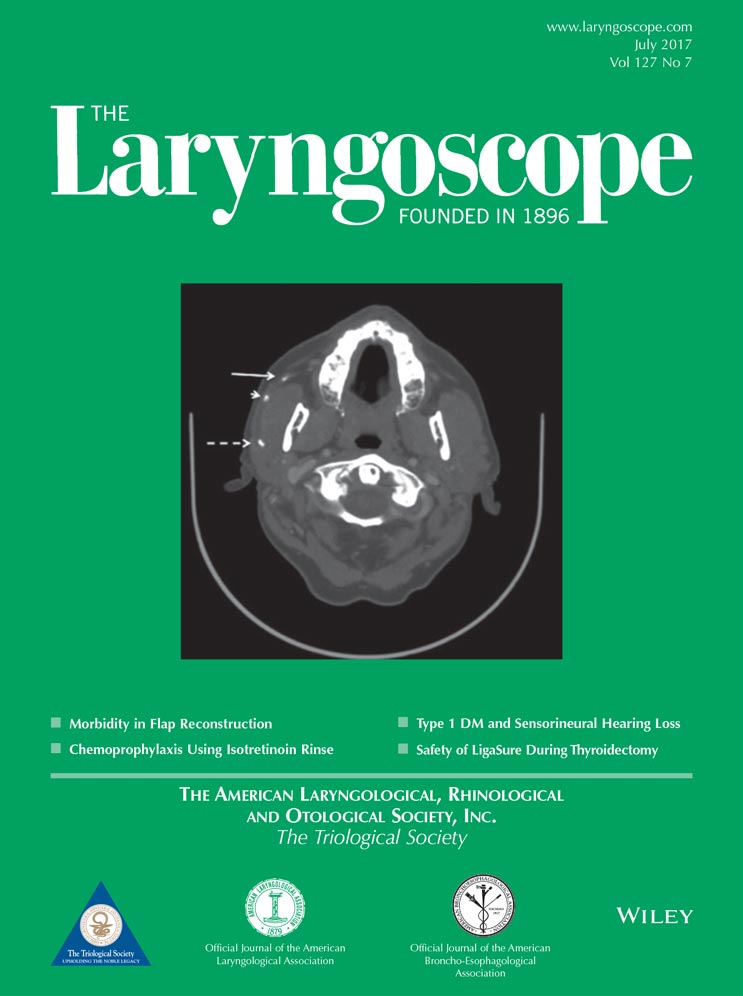Feasibility of endoscopic submandibular ganglion neurectomy for drooling
Institution where work was performed: Selcuk University, Hospital of Selcuklu, Konya, Turkey.
The authors have no funding, financial relationships, or conflicts of interest to disclose.
Abstract
We performed endoscopic transoral neurectomy of the submandibular and sublingual glands to treat drooling. We bilaterally operated two adult cases with treatment-resistant drooling. In these patients, conventional treatment had failed. Repeated botilinum toxin type A (BOTOX®, Abdi Ibrahim Pharmaceutical Company, Istanbul, Turkey) injections had been effective but were becoming less so. The patients benefited from surgery in that their saliva scores decreased. No issue emerged over 6 months of follow-up. Endoscopic transoral neurectomy of the submandibular and sublingual glands reduces saliva production and allows management of drooling in treatment-resistant patients. Laryngoscope, 127:1604–1607, 2017




